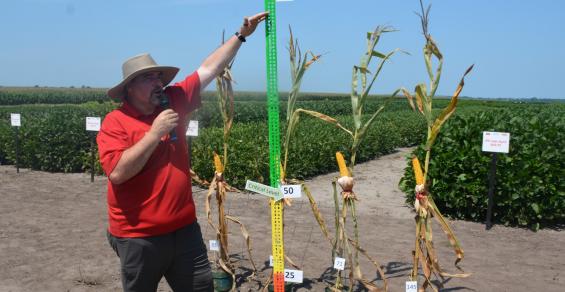When farmers are in the green zone or blue zone of soil fertility, soil fertility is not the answer to increasing soybean yield.
If farmers want to produce 70 bushels to 80 bushels of soybeans per acre, should they apply more phosphorous and potash to achieve higher yields?
For some time now, North Carolina State University and North Carolina Department of Agriculture and Consumer Services have recommended farmers have a soil index of 50 of phosphorous (P) and potash (K) for soybeans.
According to North Carolina State Extension fertility specialist Luke Gatiboni, this index represents approximately 245 pounds per acre of P2O5 and 210 pounds per acre of of K2O as available in the soil test report. The recommendation is based on an average statewide yield of 40 bushels per acre for North Carolina soybean farmers.
It turns out that an index of 50 of P and K is just fine, even for farmers who produce 70 to 80 bushels per acre. However, for farmers who want to produce 100 bushels per acre, in a high-yield environment, more P and K may be the way to go.
That’s the finding of three years of research conducted by Gatiboni and his team with on-farm trials in seven counties across three different regions of North Carolina — the Piedmont, the Coastal Plain, and Tidewater. In each of the trials, farmers were achieving yields of 60 to 70 bushels or more per acre.
Speaking at the Blackland Farm Managers Tour Aug. 3 in Pantego, Gatiboni said index 50 of P and K is adequate for achieving soybeans yields greater than 60 bushels per acre. More P and K applied doesn’t make for higher yields.
To illustrate his point, Gatiboni used a colored scale showing the phosphorous index, with a red zone, a yellow zone, a green zone, and a blue zone. The index shows that 50 of P and K will put a farmer in the green zone of soil fertility. Gatiboni stressed that applying to have more than index 100 is a waste of money and offers no yield benefits.
Gatiboni pointed out that the recommendations for index 50 of P and K began in the 1980s when North Carolina State researchers were doing trials on the different levels of P and K in soybeans, and the critical level turned out to be index 30 of P and K (approximately 145 pounds of P2O5/acre and 125 pounds of K2O/acre). But at that time, Gatiboni said farmers were only doing soil tests every four or five years, so the researchers decided to increase the critical level to index 50 to protect yields because farmers weren’t doing soil tests that often.
“They decided to recommend a little more phosphorous and potassium because this way, we could increase phosphorous and potassium and have a savings account of phosphorous and potassium in the soil,” Gatiboni said.
Gatiboni stressed that more P and K is not the answer to increased soybean yields in a high yielding environment. Last year, Gatiboni and his team began a new trial to determine what fertility strategies do work best for higher yielding soybeans, since more P and K is not the way to go.
Essentially, the researchers applied nitrogen, sulfur, and phosphorous at planting and then applied boron, nitrogen, and manganese at flowering to see if this would bump up yields. They also cut the recommended P and K rate to reach index 50 by half, to see if that would impact yield. With two years of results, it turns out there was no response to any of these strategies because the researchers were looking at high-yielding fields.
“All these fields were soils in the green zone. If you are in the green zone, you don’t need to apply nutrients. Your soil has enough. It’s impossible to find a field with high yielding potential and low fertility. It’s impossible,” Gatiboni said.
Gatiboni said when you are in the green zone or even blue zone of soil fertility, soil fertility is not the answer to increasing your yield. Instead, Gatiboni said planting date, the right maturity group and fungicides are more important factors for higher yields, not fertility.




